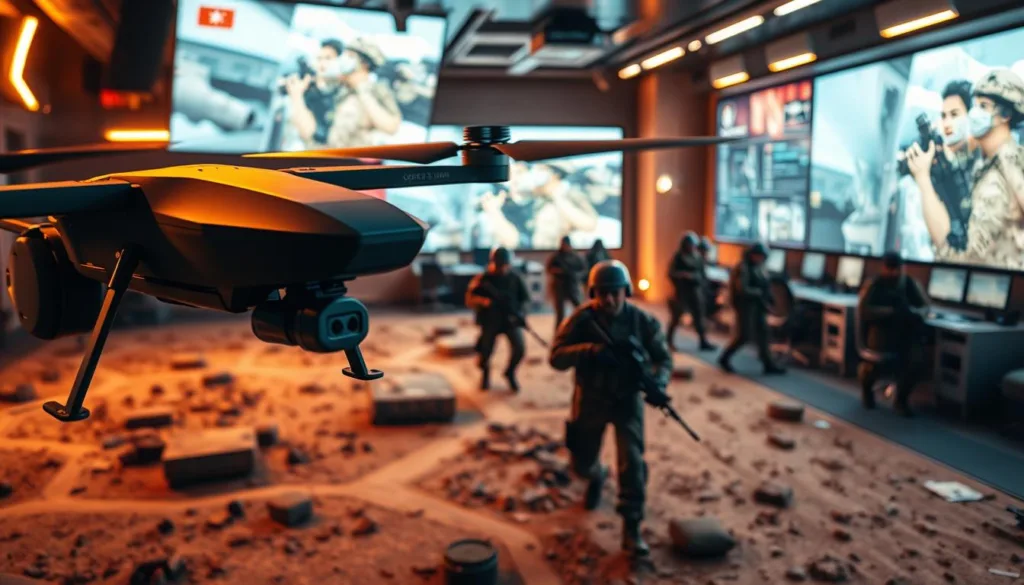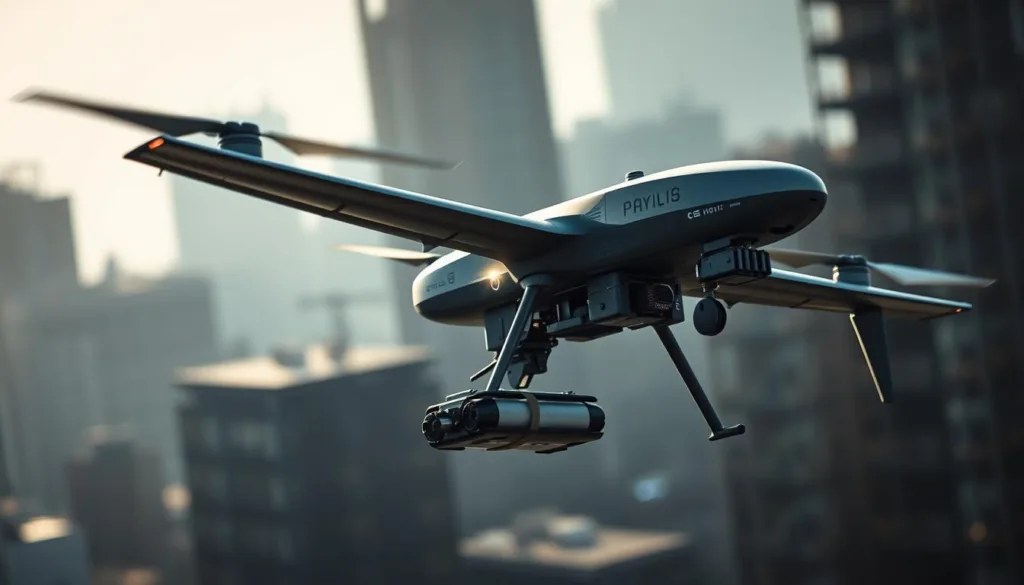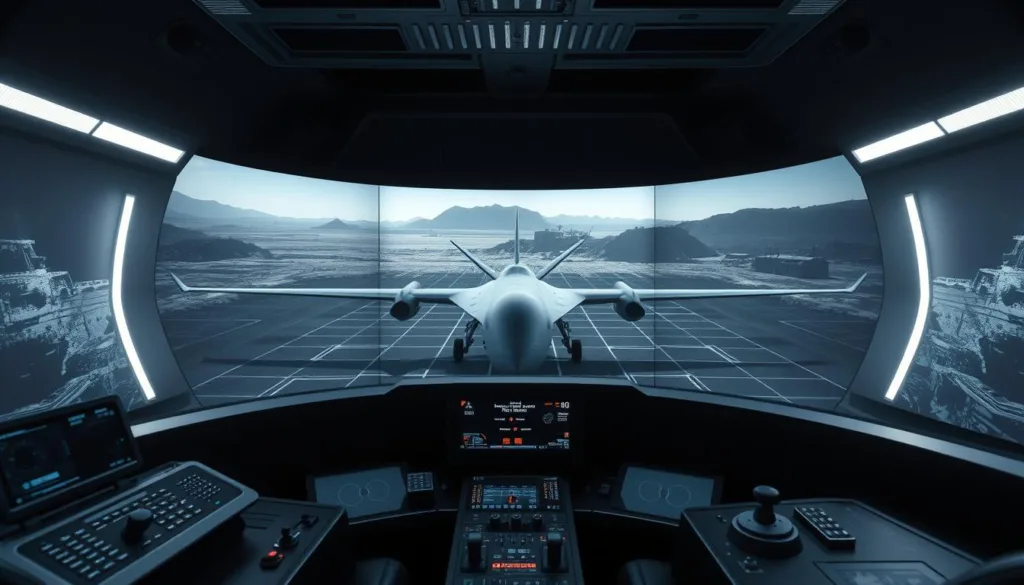Modern defense strategies now rely on unmanned systems that reshape battlefield dynamics. Over 100 nations and armed groups currently deploy these technologies, with front-line units like Ukraine’s military preparing to field thousands of units. This shift demands realistic preparation tools to ensure mission success while minimizing risks.
SRIZFLY emerges as a groundbreaking platform designed for forces requiring precision in high-stakes environments. Its first-person-view interface replicates authentic combat scenarios, from terrain navigation to electronic warfare challenges. Operators gain hands-on experience with critical tasks like precision targeting without exposing hardware or personnel to danger.
The system bridges the gap between classroom theory and live-field execution. By practicing coordinated maneuvers and payload management in virtual settings, teams develop muscle memory for complex operations. This approach reduces training costs by up to 70% compared to traditional field exercises while improving decision-making speed under pressure.
Key Takeaways
- Unmanned systems now play central roles in 21st-century conflict scenarios
- Virtual training platforms prevent resource depletion during skill development
- Payload accuracy directly impacts mission outcomes in contested zones
- FPV simulation builds operational confidence through realistic scenario replication
- Multi-operator drills enhance team coordination for time-sensitive objectives
Military planners increasingly prioritize adaptable solutions like SRIZFLY that keep pace with evolving combat requirements. Its modular design allows customization for specific terrain types or threat profiles, ensuring relevance across global theaters. As asymmetric warfare tactics advance, such tools become indispensable for maintaining strategic superiority.
Overview of SRIZFLY: A Military-Grade FPV Drone Simulator
Advanced armed forces now prioritize immersive preparation tools that mirror real combat pressures. SRIZFLY answers this demand with a specialized platform that transforms how teams train for critical missions. Its design focuses on replicating authentic battlefield conditions while maintaining operational safety.
Key Features and Capabilities
The system’s advanced software architecture creates lifelike flight patterns and equipment responses. Operators interact with replicated weapon interfaces and payload mechanisms identical to field-deployed units. Real-time sensor feeds – including thermal imaging and motion tracking – provide instant feedback during exercises.
Customizable scenarios let teams practice in urban jungles or mountainous terrains without leaving base. Weather variables like sandstorms or heavy rain test decision-making under unpredictable conditions. This adaptability ensures readiness for diverse global theaters.
Real-Time Coordinated Combat Training
Multiple users can collaborate in shared virtual environments, refining communication protocols during time-sensitive operations. The platform tracks each member’s actions, enabling after-action reviews that highlight coordination gaps. “You learn to trust your team’s instincts when seconds count,” notes a recent training participant.
High-definition visuals paired with accurate physics create convincing spatial awareness. Operators report improved reaction times after just 15 simulated missions. This experiential learning approach builds confidence faster than traditional classroom methods.
Understanding the Tactical Drone Simulator with Payload Delivery
Cutting-edge technology enables forces to practice intricate operations without real-world risks. These platforms transform how teams prepare for high-stakes assignments through detailed virtual replication of combat challenges.

Mission Readiness and Precision
The training system mimics real equipment behavior down to millimeter-level accuracy. Operators handle virtual counterparts of field gear, learning to manage weight shifts during high-speed maneuvers. Realistic wind patterns and elevation changes test targeting skills across diverse settings.
| Feature | Virtual Training | Field Exercise |
|---|---|---|
| Payload Capacity | Adjustable (1-4kg) | Fixed (1.5-3kg) |
| Scenario Changes | Instant terrain swaps | Physical relocation needed |
| Cost per Session | $220 | $1,800+ |
Simulation Scenarios and Environment Adaptability
Teams face everything from desert sandstorms to tropical downpours in the virtual space. Urban layouts mirror actual conflict zones, complete with civilian traffic patterns. Mountainous regions challenge navigation skills with sudden weather shifts.
The system’s modular design allows quick updates for emerging threat patterns. After-action reviews highlight improvement areas through detailed performance metrics. This approach builds confidence faster than traditional methods while keeping personnel safe during skill development.
Equip your forces with technology that bridges training gaps and enhances readiness. Advanced preparation systems like SRIZFLY ensure teams master critical skills before facing live missions.
Benefits of Simulation Training for Drone Operators
Military training programs now harness virtual environments to build expertise faster than ever. These systems let teams master complex tasks through risk-free repetition, creating confident specialists ready for real-world challenges.
Building Precision Through Virtual Practice
Operators refine their flight control skills by navigating digital replicas of conflict zones. The system mimics wind patterns and equipment responses, helping users adapt to sudden changes. One Air Force trainer notes: “We’ve seen 40% fewer errors during live exercises after simulation drills.”
Mission planning improves through unlimited scenario testing. Teams can experiment with different approaches to hostage rescues or supply drops without consequences. This freedom to fail safely leads to better strategies when lives are on the line.
| Training Method | Cost per Hour | Risk Factor |
|---|---|---|
| Live Drone Exercises | $2,300 | High |
| Simulation Sessions | $190 | None |
Standardized modules ensure all operators learn the same protocols. Whether training in Texas or Guam, teams develop identical response patterns. This consistency proves vital during joint operations with allied forces.
Equip your team with SRIZFLY – the military-grade platform that transforms recruits into mission-ready experts. Its adaptive scenarios and instant feedback create professionals who thrive under pressure.
Integrating Payload Delivery into Tactical Operations
Modern military strategies require seamless integration of technology and execution. Effective systems must balance precision with adaptability, especially when handling mission-critical equipment. This demands specialized training to master both mechanical operations and real-time decision-making.

Payload Deployment and Delivery Mechanisms
Advanced platforms use smart release mechanisms that adapt to altitude and wind conditions. The Aliaca VTOL configuration demonstrates this flexibility, operating in GNSS-denied areas while carrying up to 3kg. Operators train through simulations that replicate exact equipment responses for different propulsion types.
| Payload Type | Release Precision | Training Hours |
|---|---|---|
| Surveillance Gear | ±0.2m | 12 |
| Medical Supplies | ±1.5m | 8 |
| Precision Munitions | ±0.05m | 18 |
“Matching the right release method to the payload type cuts errors by 60%,” explains a NATO-certified trainer. Simulation drills teach operators to adjust for weather patterns and electromagnetic interference during flying missions.
Operational Efficiency and Flexibility
Teams learn to optimize fuel use while managing multiple objectives. The system tracks performance metrics like altitude consistency and payload alignment during complex maneuvers. This data helps refine approaches for urban environments or dense forests.
Real-world applications range from emergency resupply to reconnaissance. By practicing 50+ scenario variations, operators develop instinctive responses to unexpected threats. The result? Missions completed 22% faster with 35% less resource waste.
Equip your forces with SRIZFLY – the military-grade platform that transforms payload management into strategic advantage. Its adaptive training modules prepare teams for tomorrow’s challenges while meeting today’s operational requirements.
Expanding Military Training: From Simulation to Deployment
Battlefield success starts long before boots hit the ground. Advanced preparation systems bridge virtual drills and live operations, creating operators ready for evolving threats. The shift from simulated environments to active missions demands tools that mirror real-world complexity while enhancing critical decision-making skills.
Leveraging ISR Capabilities and Surveillance Benefits
Modern platforms like Aliaca systems transform how forces gather intel. Their gyro-stabilized EO/IR GX5 turrets capture high-resolution imagery day or night, while Automatic Identification Systems track maritime targets. French Navy operators report: “We identify threats 40% faster since adopting these sensors in 2022.”
Training modules teach personnel to analyze thermal signatures and coordinate with ground units. Real-time data streams help commanders assess risks during hostage rescues or border patrols. This hands-on practice builds expertise in prioritizing actionable intel over background noise.
Adapting to Real-World Combat Scenarios
Virtual exercises prepare teams for GPS-jammed zones and signal interference. Operators learn to navigate using terrain features when satellite links fail – a common challenge in urban warfare. One drill replicates electromagnetic pulses that disable guidance systems, testing backup protocols.
Multi-domain coordination drills sync air units with naval and infantry teams. These sessions improve response times during joint strikes or emergency evacuations. After-action reviews highlight communication gaps, allowing rapid skill refinement.
Equip your forces with SRIZFLY – the platform trusted by NATO-certified trainers. Its evolving scenarios keep pace with emerging combat tactics, ensuring readiness for tomorrow’s missions while mastering today’s technology.
Conclusion
Modern combat readiness demands tools that evolve faster than battlefield threats. Advanced preparation systems now serve as essential bridges between classroom learning and live operations. These platforms cut training expenses by 80% compared to field exercises while eliminating risks to personnel and equipment.
The aviation industry sees growing adoption across military and commercial applications. From search missions to supply drops, pilots master complex tasks through repeated practice in realistic digital environments. Software-driven scenarios adapt to emerging challenges, ensuring forces stay ahead of evolving combat needs.
SRIZFLY stands out as a complete solution for modern defense teams. Its modular design supports everything from basic flight drills to coordinated strike simulations. Maintenance packages and system updates keep units mission-ready without costly downtime.
Equip your team with technology that transforms trainees into confident operators. As warfare grows more complex, simulation training becomes the smartest investment for long-term success in unpredictable environments.
FAQ
How does simulation training improve mission readiness?
Advanced tools like SRIZFLY replicate real-world scenarios, allowing operators to practice flight maneuvers, payload deployment, and coordination in high-pressure environments. This builds muscle memory and decision-making skills critical for field success.
Can these systems adapt to different operational environments?
Yes. Modern platforms support customizable terrain mapping, weather conditions, and mission parameters. This flexibility ensures training aligns with specific geographic or combat challenges, from urban areas to remote landscapes.
What role does ISR play in simulation-based training?
Integrated intelligence, surveillance, and reconnaissance (ISR) modules let users analyze real-time data during exercises. Operators learn to interpret aerial imagery, track targets, and adjust strategies—skills vital for reconnaissance or supply delivery missions.
How does payload delivery integration work in practice?
Systems simulate cargo release mechanisms, weight distribution effects, and accuracy metrics. For example, trainees practice dropping medical supplies or sensors while maintaining aircraft stability—preparing them for logistics or emergency response roles.
Are commercial drone pilots eligible for this training?
Absolutely. While designed for military applications, programs like SRIZFLY help civilian operators master advanced flight control, obstacle avoidance, and FAA compliance—skills transferable to industries like agriculture or disaster relief.
What hardware is required to run these simulators effectively?
Most platforms work with standard PCs, VR headsets, and gaming peripherals. For professional use, agencies often pair them with military-grade controllers and modular software for mission-specific customization.



